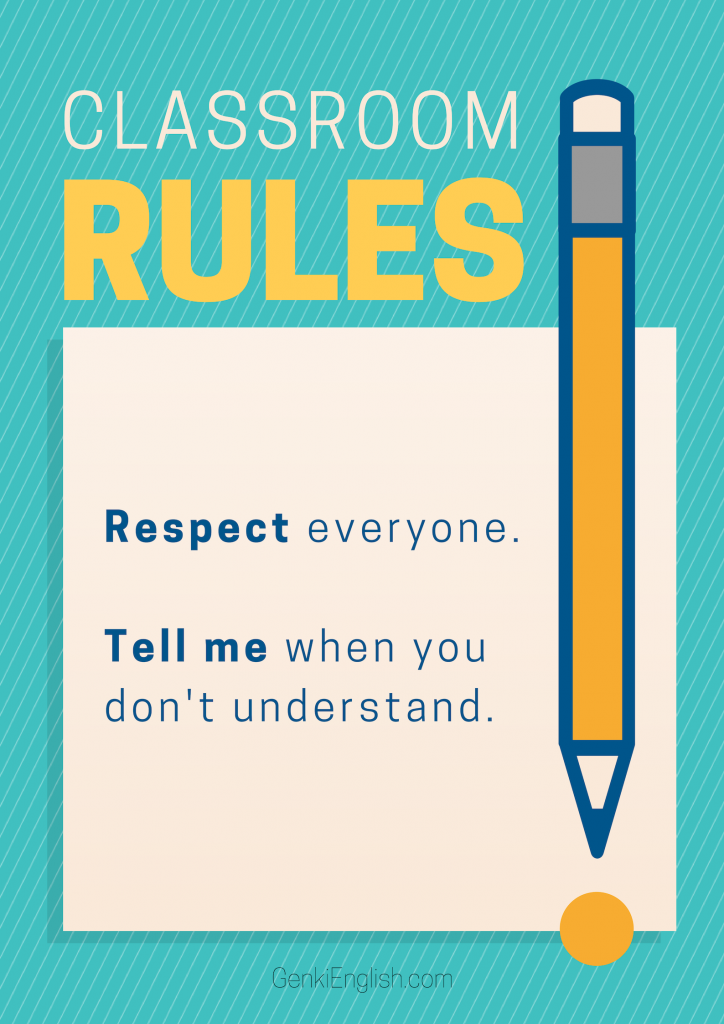I often visit schools that have huge loooonnnggg lists of things students can’t do.
So what do they do? They just find ways around them. Or just ignore them 🙂
So for me, and I’ve taught 10s of 1000s of students around the world, I only need two:

That’s it.
It covers everything.
Be genki,
Richard



Awesome classroom rules. I think I will try it. Thanks!
Clear and easy. This is going straight through the printer!
Hi, Richard, these are GREAT RULES! From my teaching experience, I´ve learned that only simple things are those which work best – and these 2 simple rules are exactly those which I am sure will work. I will implement them straight away. Thanks a lot!
What’s your strategy for #2?
I tell students that I love questions.
I try to remember to praise students for asking questions.
I try to ask students what they think it means before giving the answer. I want to encourage students to guess even when they aren’t sure.
Still, I think too many students don’t tell me when they don’t understand and I find the need to do a lot of comprehension checks.
Thanks.
Glad you all like them!
For #2 Trevor I tend to add lots of traps. So occasionally dropping into French, sometimes non-sense questions in the warm up, sometimes deliberately moving on to something without doing the pre-requisites so it’s impossible to understand etc.
hey RICHARD
could you please give some tips how to teach little kids(4-5 years old) classroom rules or maybe make us some genki crads or song with basic rules pleasssseeeeee
It’s just the same with little kids, you just need these one or two rules. Talk to them about it, remind them if they get too close and make sure there is something in place if they ever do cross them. And the main thing – be consistent 🙂